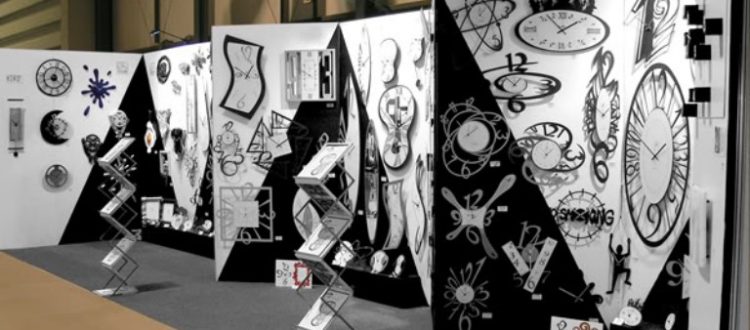Here are some of the methods used for the installation of dye sublimated fabric graphics onto Trade Show Display frames.
Question: What are the methods that are used to attach dye sublimation printed fabric banners or mural graphics to a trade show display frame?
There are several ways that printed fabric banners are attached to trade show display frames; I’ll list them below.
1. The Pullover Method
One method is the pullover method where the dye sub fabric graphic is pulled over top of the frame like a sock. It is sewn together on the top, and sometimes will have another rectangle of fabric added on the top if it is going over a frame with a rectangular foot print. This method is often used with “serpentine” displays and also on trade show booth tables/kiosks.
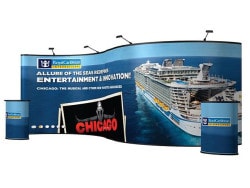
Serpentine Welcome Tables
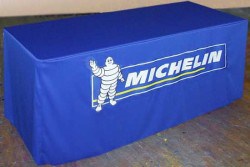
Table Sock
The Advantage
The advantage to this style of display is that the fabric graphic is pulled over the frame, so installation is very simple and quick. No matching up of clips, tabs, or velcro strips to the frame.
The Disadvantage
The disadvantage is that it is somewhat more costly because of the additional fabric, although it can have the print on both sides which is a good feature with some trade show displays that can be viewed from both sides, i.e., a larger booth area.
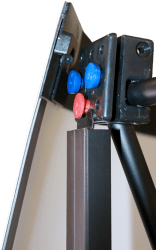
Serpentine Nimlok
Some trade show booth display manufacturers have proprietary clips or attachment methods like Nimlok, though I personally am not a fan of proprietary methods as they are both more expensive and lock you into a certain style of booth that is costly to switch away from. Large corporations may not care about this cost, but many of our clients do, and in my opinion, it’s not worth the extra money you pay for a system that is not superior in any way.
2. Velcro Method
Another method for attaching fabric graphics is velcro, which is popular because it is relatively easy to use, and can be transferred to new displays with a little re-work sometimes, although typically, with most companies, a new frame will also merit new graphics. Nobody or no company wants stale graphics, so usually this feature would not be utilized. However, it is a feature that could be useful.
Below are a typical frame, a close up of the tabs where adhesive hook velcro can be attached, and how a booth could look upon a dye sublimation printed fabric display graphic being attached with velcro, although it is likely with this scenario that more than velcro tabs are being used. It is more probable that velcro strips would be sewn to the entire length of at least the top and bottom of the graphic due to the serpentine construct of the display.
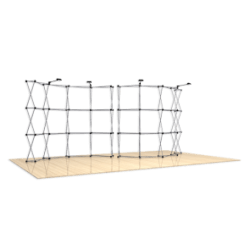
Serpentine Frame
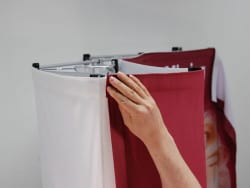
Attaching Graphics to PopUp Display
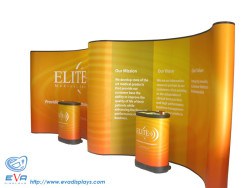
Serpentine Trade Show Display
Question: In a related question, we’ve been asked how long it takes to set up a pop up trade show display, and how difficult is it to do so?
How long does it take to build a house? This is a relatively open ended question as there are a lot of variations with trade show backdrop displays, but I think that, on the average, you should figure about thirty to sixty minutes, give or take an hour.
Depending on the Type of Trade Show Display
A “sock” style display, as discussed above, probably would take five minutes, but the first photo above, if attached by velcro tabs, might take closer to an hour to set up. The Nimlok system could take even longer, unless you’ve become proficient at setting it up.
The difficulty factor, again, will be somewhat related to the size and complexity of the display, and the difficulty factor will be the lowest with a slip cover, next with velcro tabs or strips, and then with proprietary attachment systems. At least those that I’m familiar with.
Visit this page for custom making of trade show booths, graphics, and displays at wholesale pricing.
Popular Posts:

